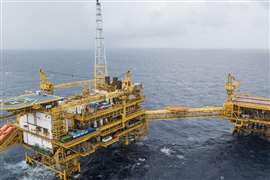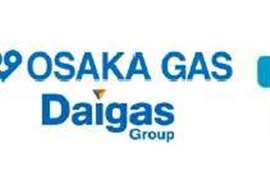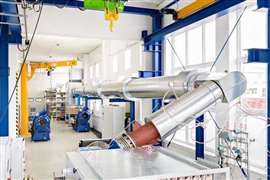Read this article in 中文 Français Deutsch Italiano Português Español
Why cylinder valves fail—and how to prevent it
August 15, 2025
Understanding the common causes of reciprocating compressor valve failures
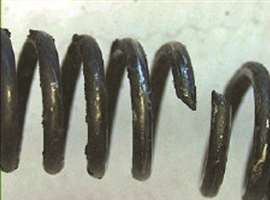
Reciprocating compressors are the workhorses of industries like natural gas, petrochemicals, and refrigeration. These machines are tasked with the critical job of compressing gases under pressure, making them essential to industrial processes. Central to their function are cylinder valves, which regulate gas intake and discharge during each compression cycle. When these valves fail, the result is often operational downtime, productivity loss, and expensive repair costs that quickly accumulate across complex systems.
Recent research has provided valuable insight into the most common causes of cylinder valve failures. Understanding these causes is key to preventing issues before they start. From mechanical wear to system overload and environmental damage, valve failures are often the product of preventable problems. In this article, we explore the root causes of these failures and offer practical strategies to avoid them, whether you’re a technician or a reliability engineer planning system-wide improvements.
One of the most common causes of valve failure is mechanical wear. Every time a cylinder valve opens and closes—a process that happens thousands of times per minute—friction occurs between the valve plate, seat, and guide surfaces. Over time, this repeated contact causes the surfaces to erode. As the sealing surfaces wear down, leaks can develop, leading to a decline in compressor efficiency. The best way to address this issue is through regular inspections and timely replacement of worn components. Using high-durability materials, such as hardened steel or plastic composites, can also significantly extend the lifespan of the valve components.
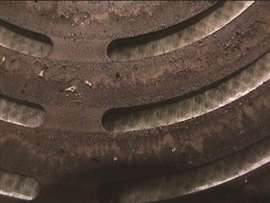
While lubrication is critical to compressor performance, too much can have costly consequences, especially for compressor valves. Over-lubrication often leads to carbon build-up, where excess oil burns in high-heat zones, forming sticky deposits that prevent valves from sealing properly and reduce efficiency. Sluggish or sticking valves can also result, caused by oil thickening or interacting with particulates, which impairs valve timing and increases energy use. Additionally, oil residues can attract dirt, accelerate valve wear and shorten component lifespan. For operators facing recurring valve problems, it’s essential to reevaluate lubricator settings, oil feed rates, and oil quality. A proactive approach can help maintain the delicate balance needed for reliable, high-performance compressor operation.
System overload is a failure mode often linked to operational practices. Compressors are designed with specific load and pressure limits, and pushing them beyond these parameters can have serious consequences. Excessive mechanical stress on the valve can lead to warping, cracking, or outright failure. In many cases, overload occurs because a compressor is being used for tasks beyond its design specification. Preventing this means operating the compressor strictly within its rated capacity, continuously monitoring system loads, and selecting the right equipment size for the job at hand.
Another issue is high-cycle fatigue. This failure mode arises from the repetitive stress imposed on valve materials during normal operation. Over time, the materials, particularly springs and thin components, may develop microscopic cracks that eventually lead to mechanical failure. This kind of damage is often invisible until it causes a malfunction. Using fatigue-resistant materials during valve manufacturing, optimizing operating cycles to reduce unnecessary stress, and implementing regular inspection routines can all help mitigate this form of wear.
Gas condensate slugging represents a more sudden and dramatic form of valve failure. When liquid enters the gas stream—usually due to insufficient gas drying or poor upstream separation—it can be drawn into the compressor. Upon compression, this liquid causes a hydraulic shock that can damage or break valve components. This phenomenon is both dangerous and costly. The most effective way to prevent it is to properly condition the gas before compression. This includes installing moisture separators and auto-drain systems, along with routine checks to ensure no liquid is present in the intake stream.
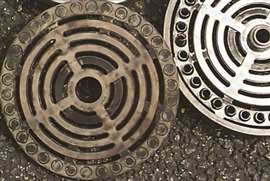
Contamination by foreign particles is another frequent contributor to valve degradation. Dust, rust, and other debris can enter the system through the gas stream or during maintenance. These contaminants can obstruct valve motion or act as abrasives that accelerate surface wear. Ensuring the intake system is equipped with high-quality filters, maintaining a clean operating environment, and verifying the purity of both gas and lubricants are essential steps to mitigate this issue.
Installation and assembly errors are also major contributors to early valve failure. Mistakes such as improper torquing, misalignment, or use of incompatible components during maintenance can compromise valve function. Even minor deviations from the manufacturer’s specifications can introduce stress points or reduce sealing effectiveness. Preventing this type of failure starts with training. Technicians and maintenance personnel should be thoroughly trained on installation procedures and should follow the manufacturer’s guidelines exactly. Post-installation checks for alignment and fastener torque can help verify that everything is set up correctly.
Overheating is a thermal problem that often results from poor cooling, high ambient temperatures, or long periods of high-load operation. When valves are exposed to sustained heat, their materials can expand, warp, or become brittle. In extreme cases, overheating can cause valve failure or piston seizure. Prevention lies in keeping the compressor’s cooling systems in excellent condition. Operators should also monitor temperatures in real time and avoid operating the compressor at full load for extended durations without adequate cooling.
Lastly, corrosion is a long-term threat caused by chemical interactions between valve materials and elements present in the gas or lubricant. Corrosive environments lead to pitting, cracking, and eventual disintegration of valve surfaces. This can occur when acidic lubricants are used or when gases contain aggressive compounds. The solution is to use corrosion-resistant materials such as stainless steel or coated alloys, and to ensure that both gas and lubricants are treated to remove harmful substances. Routine inspections for signs of corrosion can also allow for early intervention.
Each of these failure modes can be addressed with proactive strategies. By combining smart design choices, disciplined operational practices, and a commitment to regular maintenance, it’s possible to significantly reduce the frequency of valve failures in reciprocating compressors. In industrial settings where uptime is critical, even small improvements in reliability can translate into major financial and operational gains.
Cylinder valve failures are rarely the result of a single issue. More often, they stem from a chain of small oversights: a skipped inspection, an overloaded compressor, or a contaminated gas line. But by understanding the causes and implementing effective preventive measures, facility managers and maintenance teams can extend the life of these critical components and ensure the smooth operation of their compressors for years to come.
MAGAZINE
NEWSLETTER

CONNECT WITH THE TEAM






